As part of the [Re:]Entanglements project, we have collaborated with artists to explore and interrogate the colonial anthropological archive. One of the artists’ works that is being featuring in the [Re:]Entanglements exhibition at the Museum of Archaeology and Anthropology in Cambridge is an assemblage of clay face fragments made by the Nsukka-based ceramicist Ozioma Onuzulike.
Onto these fragments, Onuzulike scores the lines of igbu ichi. These scarification marks can be seen on the faces of many Igbo men photographed by Government Anthropologist Northcote Thomas during his 1910-11 survey in what is today Anambra State, Nigeria. A sign of nobility, it is said that no one bearing the marks could be enslaved.
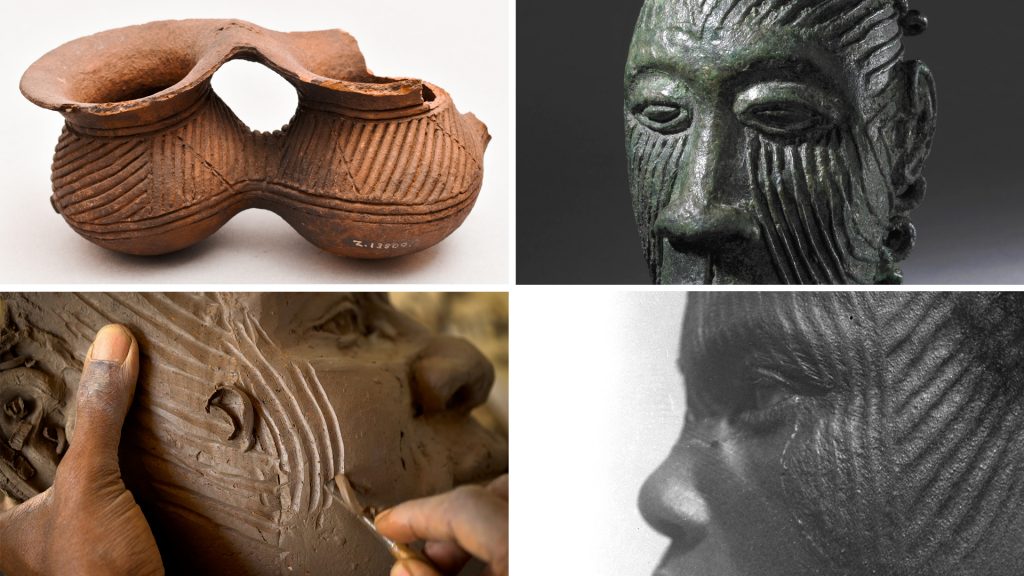
Onuzulike contrasts the ‘lyrical lines’ of igbu ichi with the lacerated clay body fragments he makes. Like shards of broken pots, they speak of a continuing history of damage: ‘When I began to make the fragments’, he explains, ‘I began to think of Africa as a fragmented people, right from when the continent was cut up at the Berlin Conference of 1884-5′. In the following statement, Onuzulike discusses his work for the [Re:]Entanglements project.
Of mutilated, fragmented bodies and scarified faces
by Ozioma Onuzulike
Much of my work is political. I often rely on the conceptual qualities and metaphorical attributes of my medium, which is primarily clay, as well as my work processes, including acts of crushing, pounding, cutting, wedging, slamming, pinching, kneading, scorching and firing, to address socio-political and economic issues germane to my immediate environment. I am often inspired by the social histories of the African continent and how such histories impact on the current realities around me, especially in the context of the human condition in my home country, Nigeria, in which I live and work.
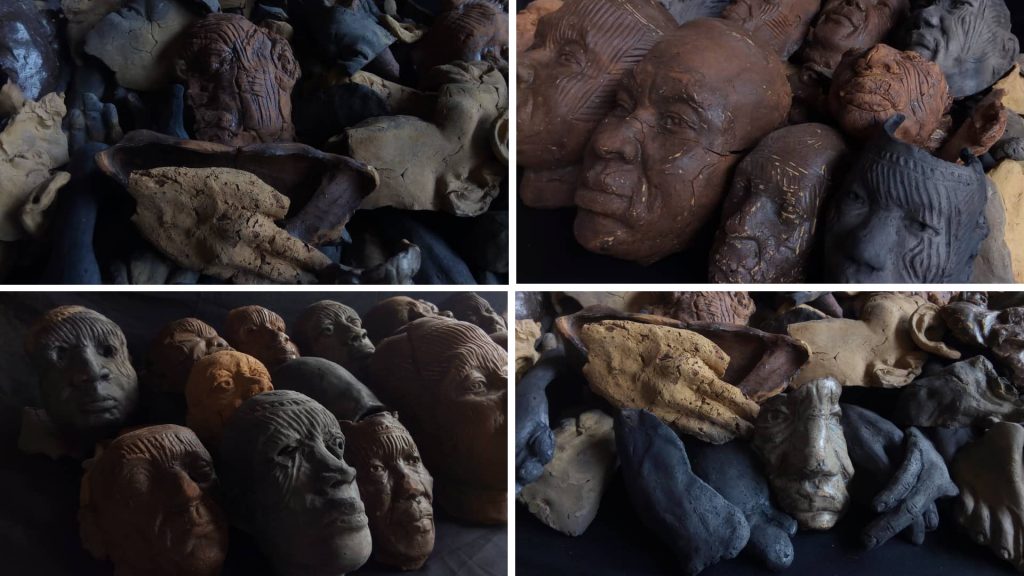
Key aspects of Africa’s history that have influenced the thoughts surrounding my recent work are the obnoxious trade in African men and women of productive age as slaves; colonialism; and the after effects of these encounters. While millions of young African men and women were in the past forcefully taken away to work in the plantations, factories and homes of their Euro-American masters, today circumstances at home force them to legally and illegally migrate to work in Europe and America. The African continent has become a hostile environment in which to thrive, a vast land exploited and impoverished by imperial powers and their African collaborators. The search for ‘greener pastures’ has led many African immigrants to their death, especially in the Sahara desert and the Mediterranean Sea, turning these zones into burial grounds for Africa’s youth.
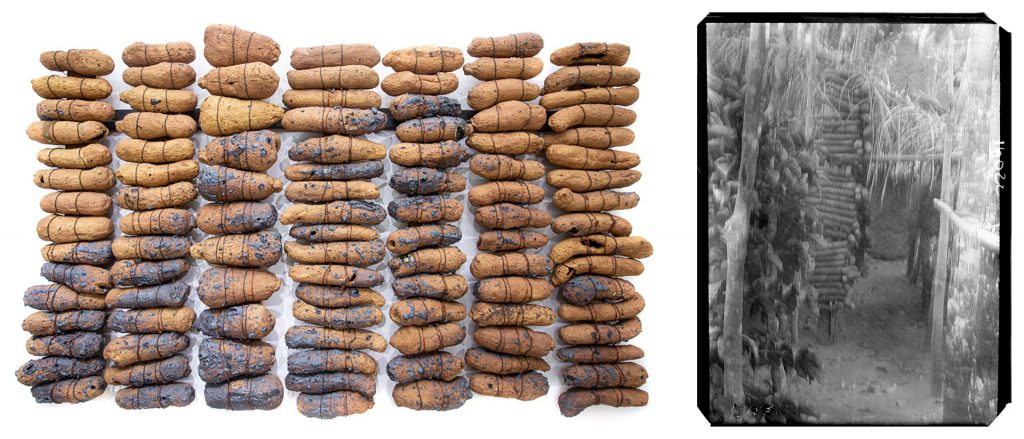
In my previous work for the Seed Yams of Our Land exhibition held at the Centre for Contemporary Art, Lagos in 2018, I sought to reference the young people of Africa as the continent’s yam seedlings. The yam is a sacred and prestigious crop in Igboland – my place of origin and nurture. In the past, the yam crop was the main socio-economic stay for men and their families. The yam seedlings, therefore, were held sacrosanct as the future hope of every family for economic and socio-political sustenance. When planted in a harsh, barren or impoverished environment, the yams become stunted, ravaged, devastated or totally destroyed. When they lie individually, I see in the form of the yam tubers what look like motionless human bodies encased in body bags. When sorted and tied together, like in a typical African yam barn, they remind me not only of how African slaves were in the past crammed into slave ships like mere commodities, but also how they are today tightly packed in trucks and boats, hazarding the desert and the sea, driven by the hope of going to ‘grow’ better in a more conducive environment. Many have been lost, or broken, in transit.
The fate of many illegal African immigrants across the Sahara and Mediterranean inspired me to make a series of human fragments – human remains – heaped together as in preparation for a mass burial or displayed individually as if archaeological specimens turned into museum spectacles. The fragmented bodies remind me of a shattered earthen pot that cannot be successfully melded to its original form without showing evidence of its encounter with the agents or agencies of disintegration. In a similar way, colonialism shattered Africa and its peoples in ways that make it impossible for them to be the same again.
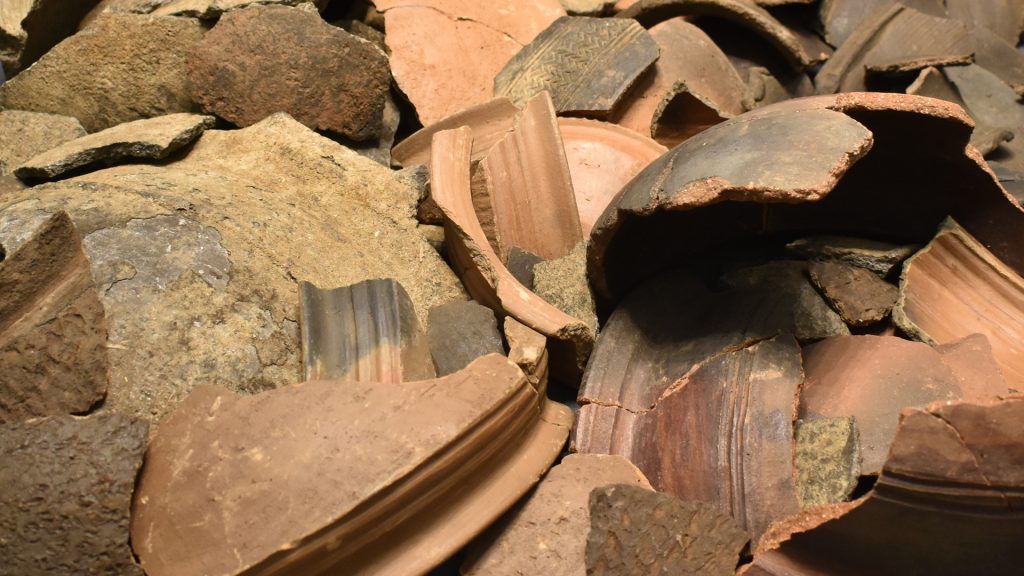
In the work I produced for the [Re:]Entanglements project, I added scarified human heads in terracotta to the earlier body of work made of fragments of human body parts. The series represents the culmination of my studio engagement with the earthen pots, decorated with the incision technique into what looks like ichi scarification marks, collected from Igbo areas of Nigeria by Northcote Thomas in the early 1900s. Many of these pots shattered or disintegrated while in transit to their new home in Europe. And they can never be the same again, never recover their original integrity, even if glued together.
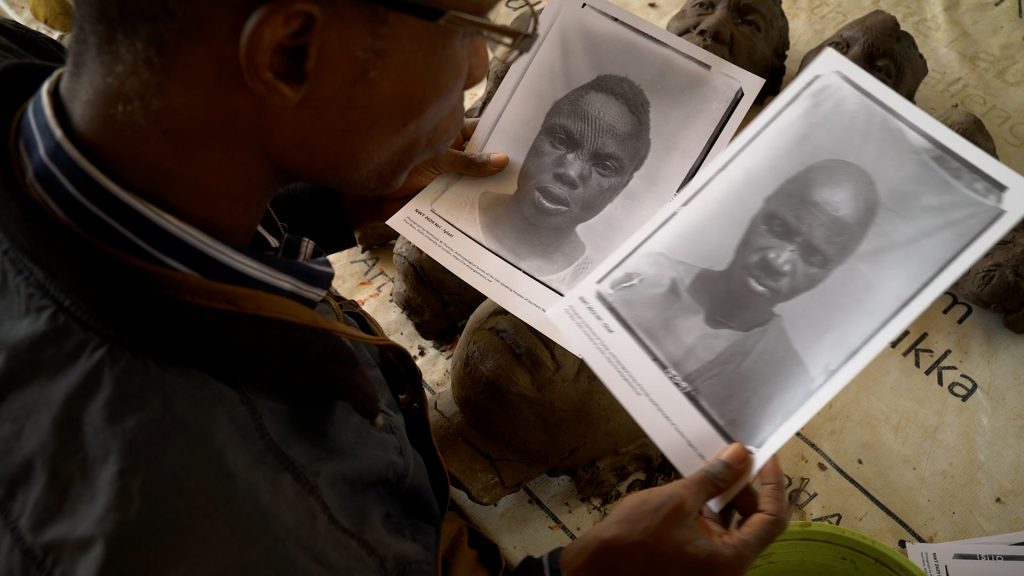
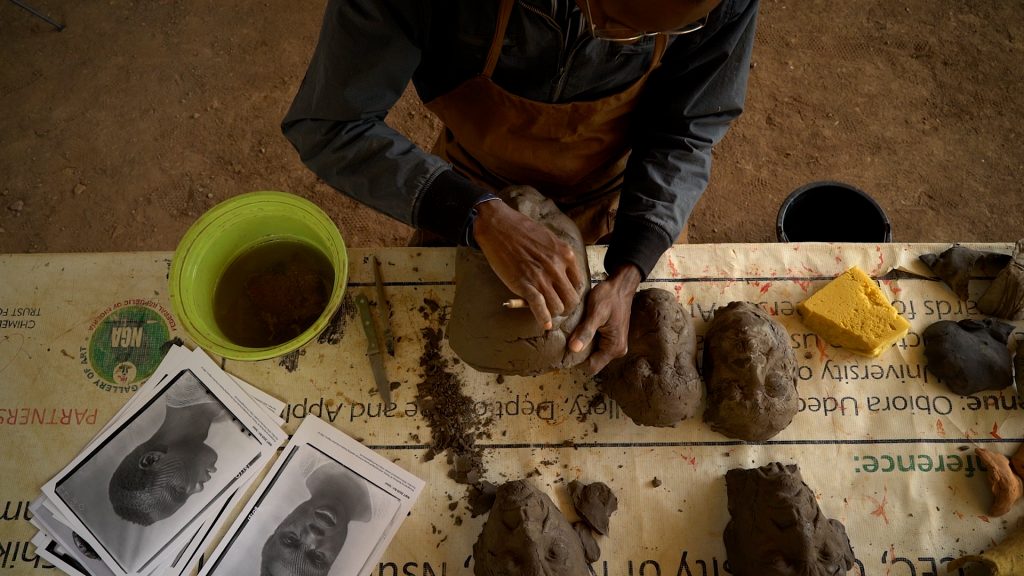
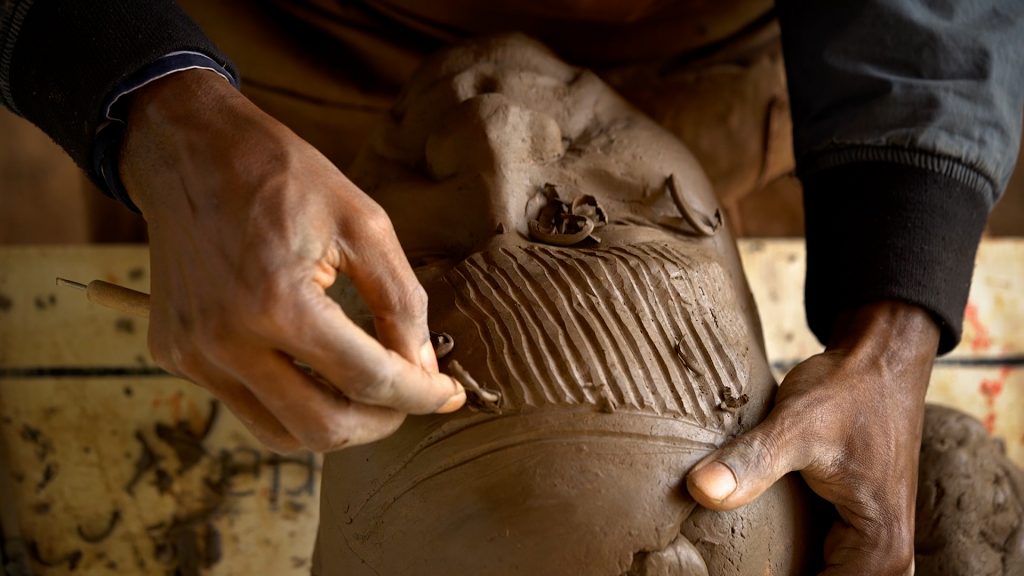
Like incised earthenware pots passed through fire, a scarified human face takes on a new and irreversible identity after the healing process. Similar to the Umudioka people who cut the ichi marks, using my fabricated studio tools, I slowly but deftly cut through the defenceless flesh of the African faces modelled in clay, transforming them into faces with new forms and identities. The wounds have healed, after passing through the ordeal of my kiln fire, but the scars remain indelible. This studio process is only a performative gesture mirroring the permanent transformations of Africa and African affairs by the colonial and neo-colonial encounter.
![Lines, Faces, Fragments installation, [Re:]Entanglements Exhibition, Museum of Archaeology and Anthropology, Cambridge](https://re-entanglements.net/wp-content/uploads/2021/07/Re-Entanglements_exhibition_installation_Ozioma_Onuzulike_Lines_Faces_Fragments_2_re-entanglements.net_-683x1024.jpg)
![Lines, Faces, Fragments installation, [Re:]Entanglements Exhibition, Museum of Archaeology and Anthropology, Cambridge](https://re-entanglements.net/wp-content/uploads/2021/07/Re-Entanglements_exhibition_installation_Ozioma_Onuzulike_Lines_Faces_Fragments_1_re-entanglements.net_-1024x683.jpg)